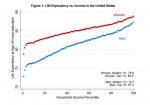My definitions are as close to the others as they need to be.
It gives a better analysis of what is actually occurring than the U3 number.
But they are numbers, not analysis. That's what I keep trying to tell you. YOU analyze, the numbers simply are.
if they didn't describe anything then someone wouldn't use them.
It is the people who analyze them, it's not the numbers who analyze themselves. This really isn't hard to understand.
how are they actually employed to be considered?
Because they worked. That's the point. During the week being surveyed, they were employed. Counting them unemployed, when they were employed, would be false.
the U5 and U6 numbers consider them as unemployed.
No, it doesn't. If they only worked 1 hour, but wanted to work 40, it would count them as "part time for economic reasons".
I'll go ahead and post these links. I know you'll just call them lies like you did with Common Core, even though it is the official site, but if you are genuinely interested, you can at least learn a little:
How the Government Measures Unemployment
Table A-15. Alternative measures of labor underutilization
Nope I am perfectly fine with the U5 and U6 numbers.
Sure, go ahead. You're welcome to use them, they are there for a reason. But it doesn't change the fact that the U-3 is the official unemployment number for a reason. If you wish to use the numbers to ANALYZE a situation, such as economic strength, you're welcome to do so. What you are not welcome to do is say that U-5 and U-6 are the "real" unemployment numbers, since they really aren't.
If there is no narrative then it wouldn't be generated as there wouldn't be a point.
Sure it would. What's the narrative behind a batting average? There is none, it's only there because it's basic math (3 hits out of 10). That's all the U1-U6 numbers are, basic math. It's what people try to glean from them which is where you are having a problem.
I never said they didn't work did I? nope
I said they working 1 hour shouldn't be considered employed
It's a simple question...did they do work for pay? If the answer is yes, they were employed. Were they underutilized? Very possibly. But they were employed, if only for the hour. Going back to the baseball example, if a batter only gets 1 single out of 10 AB, did he not actually hit the ball at all?
You're trying to insert analysis into numbers. You're welcome to take from the numbers what you will, but it doesn't change the accuracy of the numbers. That's the point.
which is why we have the U5 and the U6 numbers
that account for those.
The U-5 does not. The U-6 does, as it counts them as "part time for economic reasons". But it does NOT count them as unemployed.
again I never said they didn't work.
You said they should not be counted as employed. Which is it? Are they employed or are they not? If they worked for pay, they were employed at some point in the month of April.
you need to stop strawmaning.
I'm not creating a strawman for you. I'm trying to get across the point that if they worked for pay, they were employed, even if it was only for an hour.
yep which is why the U5 and U6 is a better representation of unemployement.
No, it's not. What I THINK you are trying to say is that it is a better representation of the conditions of the labor market. It is NOT, however, a better representation of unemployment (since it includes people who are employed). They are two totally different things.
Yep I have a problem when numbers are generated to give a false narrative and so should you.
But they are not generated for any narrative. It is you (and me and the media, etc.) who generates the narrative from the numbers. Just like a batting average, it's basic math. It's the commentators who tell us a .300 batting average is pretty decent, not the number itself.
Agreed. Work for pay/profit = employment.

